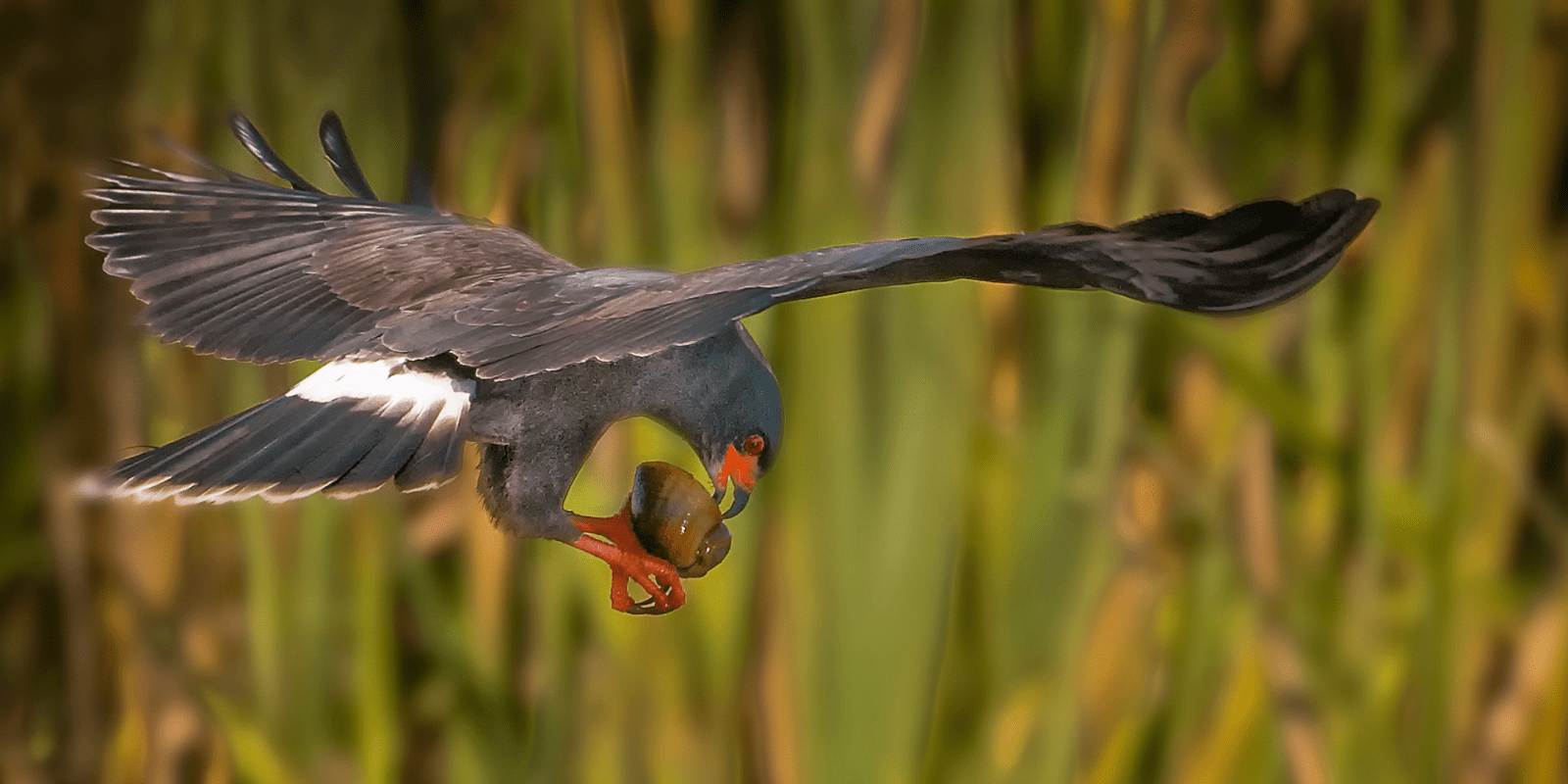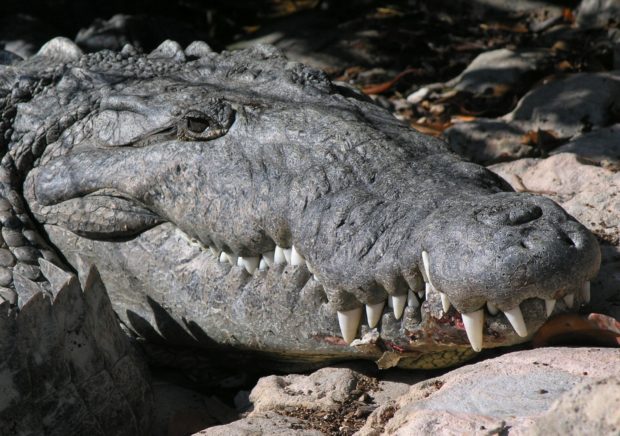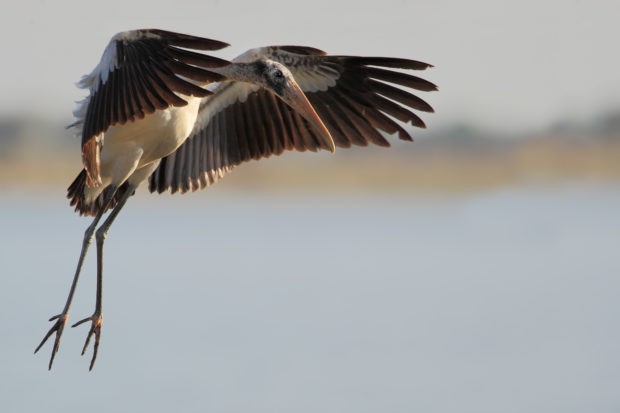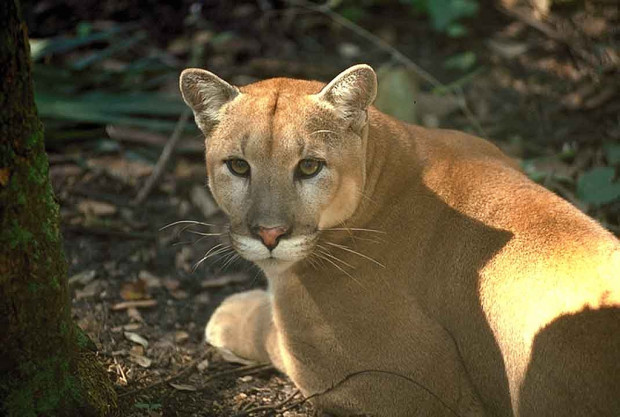We have much more to do and your continued support is needed now more than ever.
5 Unusual Species Found In and Around the Everglades

The Everglades once covered much of Florida from Orlando to Miami, but only about half of this unique subtropical wetland system remains today.
Despite the losses, the Everglades is still home to many rare species of wildlife that you are likely to only see in South Florida—at least within the United States. Sadly, all of these species are facing significant challenges and most would benefit from long-overdue projects to restore the Everglades.
Everglades Snail Kites
The Snail Kite may one of the most specialized raptors in the world. Their curved, off-center bill evolved to extract apple snails from their shells.
In the United States, these birds—and the snails they feed on—live only in the greater Everglades area, mainly in Lake Okeechobee. But over the past century, the destruction of wetlands, changes to water flow patterns and increasing poor water quality have dramatically reduced snail kite numbers.
The bird has been on the endangered species list since its inception in 1967. The bird’s populations recently took another blow when Hurricane Irma wiped out all the snail kite nests in the Lake Okeechobee area, the heart of its habitat. Restoration of the Everglades would help stabilize and restore more natural water levels, benefiting snails and snail kites.
American Crocodiles

South Florida is the only place in the world where you can see alligators and crocodiles living together. While alligators live primarily in freshwater, American crocodiles seek out a mix of fresh and saltwater. As a result, both species can be found in South Florida’s coastal estuaries—places where freshwater mixes with saltwater—such as in Florida Bay, at the very tip of the state.
Unfortunately, the freshwater that once flowed overland to from Lake Okeechobee to Florida Bay via the Everglades’ “river of grass” is now diverted to the east and west coasts. As a result, Florida Bay now only receives a fraction of the freshwater it once did, and it is likely not a coincidence that this area has some of the lowest rates of growth and survival of juvenile crocodiles anywhere in Florida.
Bonefish
Many think of bonefish as living in the Caribbean, but the species—sometimes called “grey ghosts” for their elusive nature—can also be found at the southernmost tip of Florida, where they are the foundation of a valuable tourism industry.
But Florida’s bonefish populations are dropping and researchers have found that the fish had the most significant declines in Florida Bay. This is troubling because Florida Bay is important habitat for juvenile bonefish, who are often found in the bay’s fresher areas. Jennifer Rehage, a Florida International University researcher, says “This finding tells us the link between bonefish, freshwater and the Everglades is stronger than we previously thought.” The same types of restoration projects that would help crocodiles would also likely benefit juvenile bonefish by creating a more natural balance between fresh and saltwater.
Wood Storks

Wood storks are stunning birds—three feet tall, with a distinctive wizened, bald head. The only native storks in the U.S., they are mostly found in and around the Everglades, with smaller populations elsewhere in the southeast.
Sadly, the Everglades do not support nearly as many wood storks as the area used to. Wood storks prefer wet summers—which boost fish populations—and dry winters, which makes hunting easier by collecting the fish into smaller areas. Wood storks will not even attempt to nest if sufficient food is not available. Projects to restore more natural flows throughout the Everglades would restore shallow wetlands and would likely boost fish populations, helping wood storks.
Florida Panthers

The Florida panther is the last subspecies of Puma still found in the eastern U.S. The Florida panther, too, was once almost extinct, with only a dozen adults estimated in the wild. Today, thanks to extensive conservation efforts, there are thought to be somewhere between 120-230 adult Florida panthers in the wild.
It’s a phenomenal success story but Florida panthers still have a long way to go. The biggest obstacle is a lack of suitable and connected habitat. In 2014, Florida voters overwhelmingly passed a constitutional amendment to provide sufficient funds to protect environmentally sensitive lands statewide.
To date, however, the Florida Legislature has failed to use these funds solely for conservation. Our affiliate, the Florida Wildlife Federation, headed a lawsuit to force the Legislature to spend the money as the voters intended. Last summer, a judge ruled in favor of the conservation organizations, but the case is now on appeal.





















